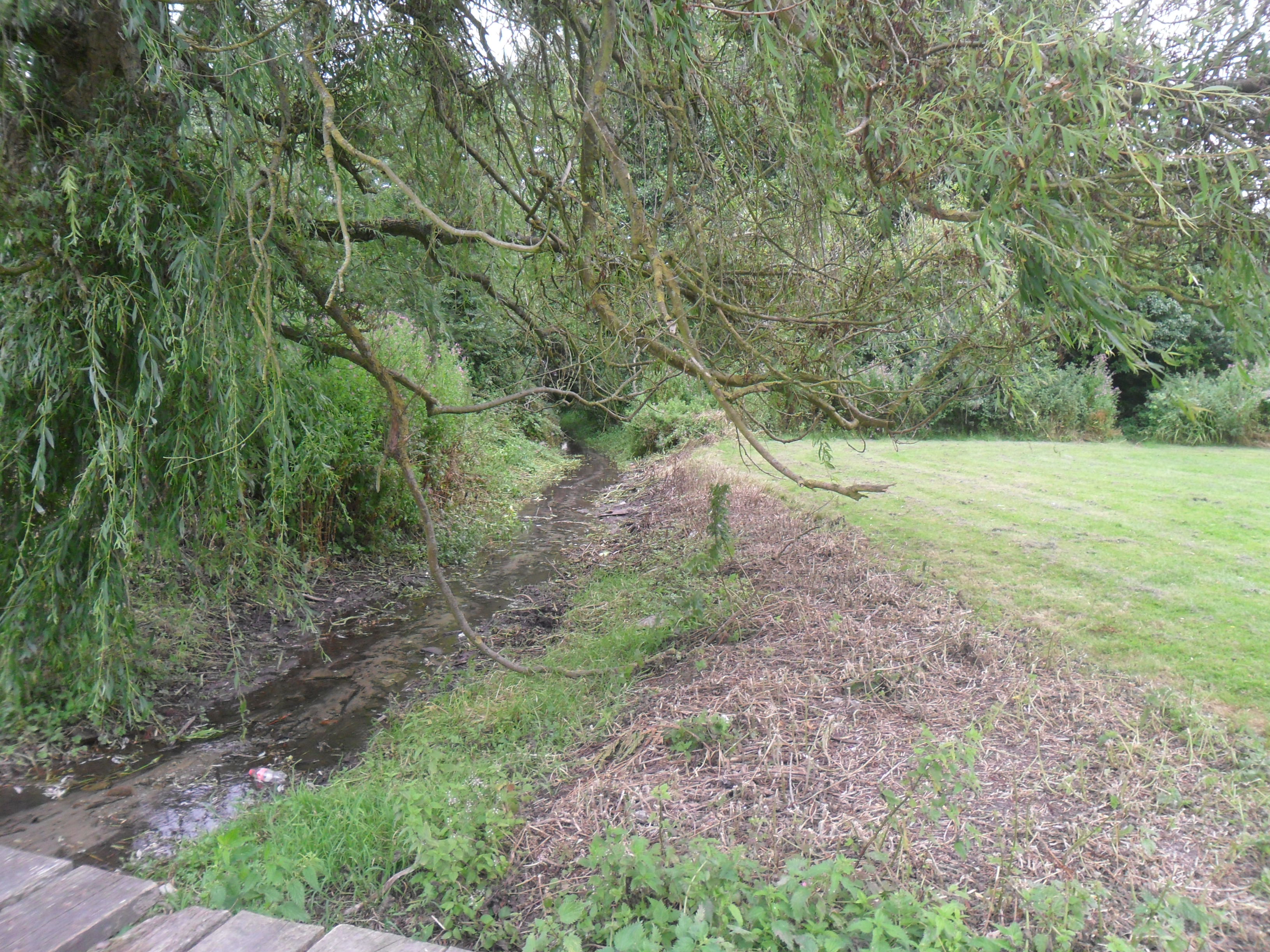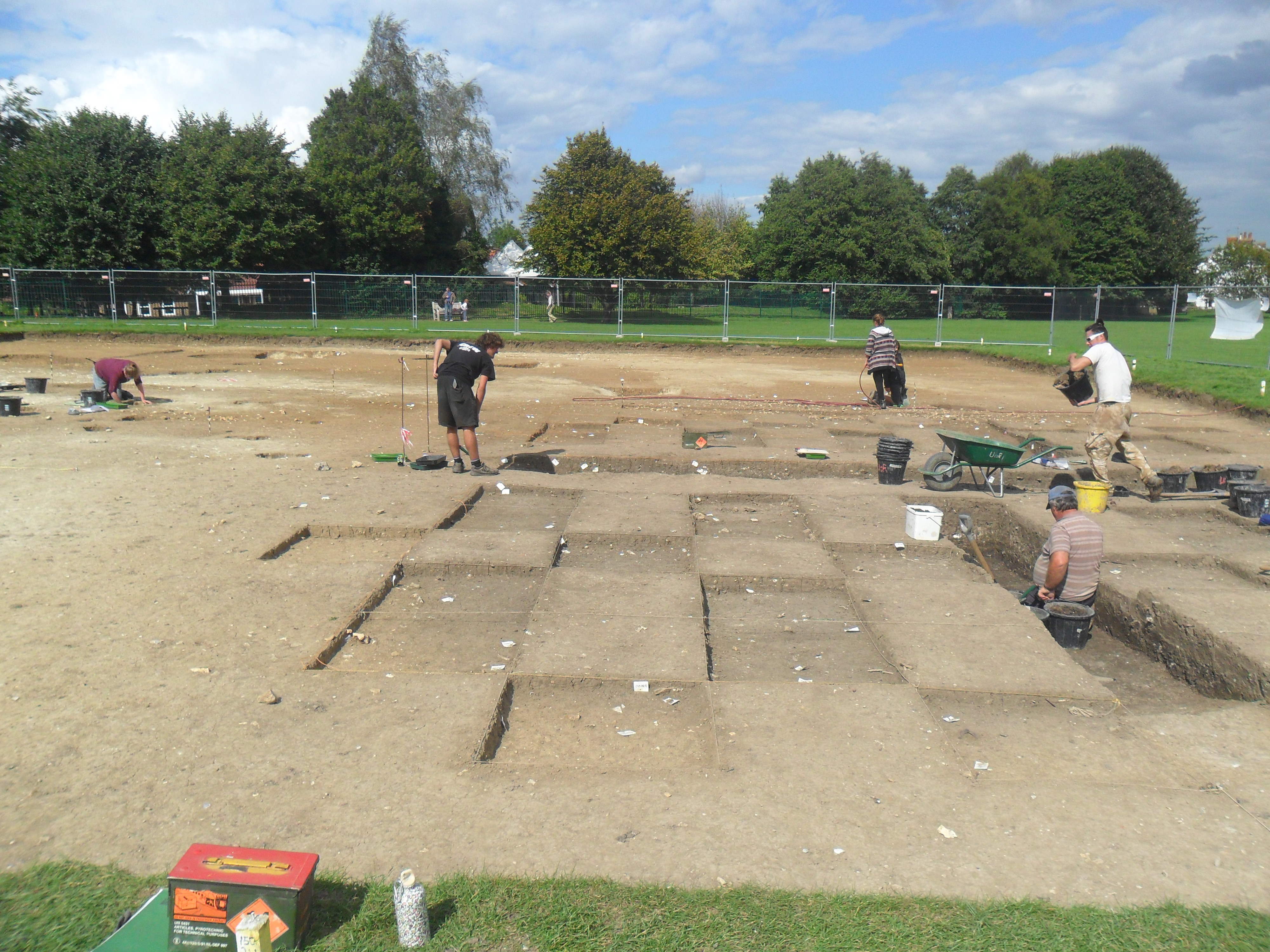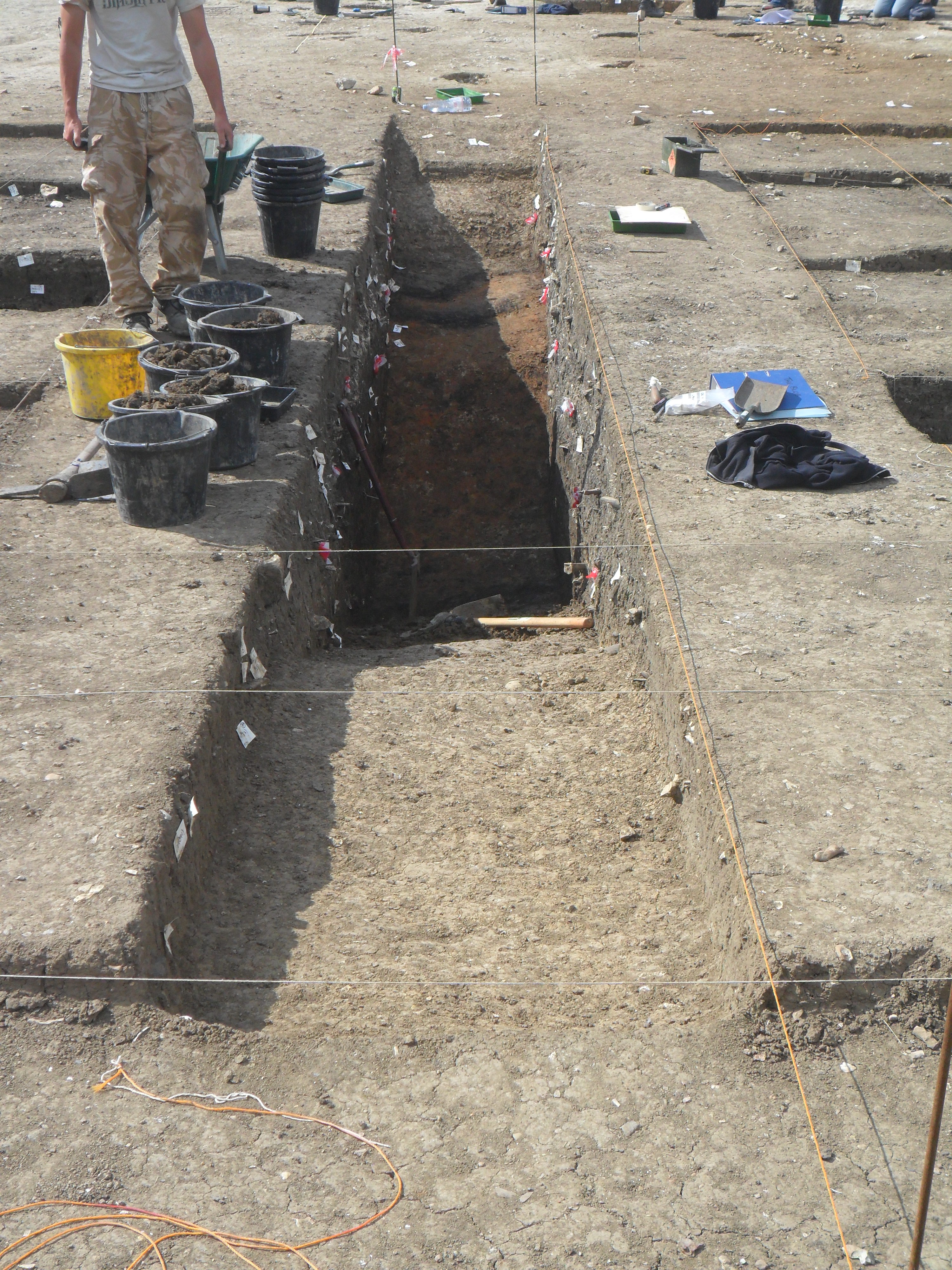It’s been a while since I last blogged, and especially since I last blogged about the Lyminge Archaeological Project – a fantastic research excavation undertaken by Reading University which I’ve been following with great interest. I popped back down to visit the dig in sunny Kent this summer to catch up with the 2014 campaign of excavations. As ever, it did not fail to impress. Lyminge is the Anglo-Saxon site that keeps on giving.
You can keep abreast of the full story through the official project blog. There’s a forthcoming conference, too, marking the end of the latest phase of the project: read about it here. For this blog post, however, I just want to flag up a couple of things that are of particular interest to Farming Unearthed.
Firstly, environmental supervisor Simon Maslin showed me the ‘bonus’ trench that had been opened by the banks of the Nailbourne, just downslope from the main focus of excavation on Tayne Field. The exciting thing here is the degree of waterlogging in the deposits, which makes for a (frankly) unsightly trench, but excellent preservation of organic materials, including worked wood, pollen, and additional remains of plants otherwise unlikely to be preserved. Cereals are prone to being charred; other species – edible or otherwise – can often slip through the taphonomic net, unless we have waterlogged or mineralized material. And now at Lyminge, for the monastic Mid Saxon phase at least, it’s looking to be a veritable botanical hoard: charred, waterlogged, mineralized… a far cry from the thin smattering of charred grains that characterize so many Anglo-Saxon botanical assemblages. So we can hope, as analyses proceed, to find out much more about the plant economy and ecology of Lyminge than we can with most other sites of the period.

Secondly, back up at the main excavation, there’s a feature initially identified by geophysical survey as an amorphous blob. Now, at the sight of an amorphous blob, archaeologists prick up their trowels, mattocks begin to twitch, and trenches open. And out of the blob cometh forth Early Saxon rubbish, yea even metal-working debris.

And slowly but surely, there appeared to those diggers a hollow in the earth, a hollow apparently once used for metal-working, and sometime after backfilled with rubbish. And all this in the 6th century, of all times. As Anglo-Saxonists will realize, this is pretty astonishing stuff: specialist metalworking – and then a midden to boot – are exceptional in the 6th century. Most tantalizing for Farming Unearthed is the possibility of yet more botanical bounty in the soil samples taken from the midden. The majority of archaeobotanical samples from this Early Saxon period come from the fills of “sunken-featured buildings”, and tend to be very sparse – plausibly because of the disturbance involved in the backfilling of those buildings.

But here, potentially, we could see primary waste deposits from crop-processing activities, dense and informative, besides all the other fascinating domestic and industrial rubbish.
As I’ve said before, this project really is one to watch, and the hidden mysteries of midden histories could turn out to be some of the richest pickings of the project.
MJM.
With thanks to Gabor, Simon, Alexandra & Zoe
Are there hypotheses you want to test, or great questions you want to answer? Or is it at the stage of “I’d love to know what they’ll turn up?”
Good point. For me there are both specific hypotheses to explore and more open-ended opportunities.
Several people (including me in my thesis) have argued that Mid Saxon monasteries may have been particularly active and innovative in developing agricultural/horticultural practices around the 8th century, but direct archaeobotanical evidence for this is still rather sparse. The Lyminge assemblage, with its strong preservation, could start to flesh this out.
Better still, the fact that we also have material from the pre-monastic phase (when Lyminge was home to a royal complex) could allow us to trace exactly what changes were associated with the minster. As far as I know, there is no other excavated Anglo-Saxon monastic/royal site that allows us to take such a long-term perspective with well-preserved organic remains. It could break very new ground indeed.
Oh you lucky, lucky lad. When you get a huge stroke of luck in your research, exploit it like mad. You may never get another.
Well, since finishing my thesis, I’m not directly involved in the project myself (at least, not at the moment). But yes, there’s a whale of a project waiting in all this.